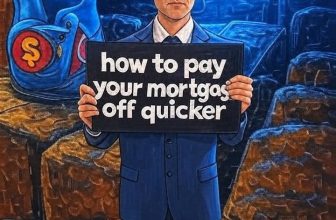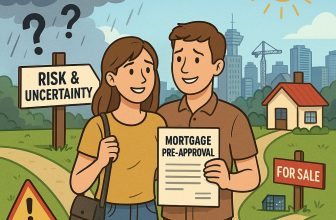Summary
(Dec 4, 2020) The winning choice is to have all three available as options.
The following is discussed in this episode:
Mortgages are classified as one of the following three; Insured, Insurable, or Uninsured/Conventional.
The way a mortgage is priced and qualified depends on how its funds were purchased, acquired or allocated.
Mortgages are either insured by the borrower, bulk insured (securitized) by the lender, or simply uninsured all together.
Once they are given their insurability classification, they are then priced and underwritten, accordingly:
(1) INSURED MORTGAGES
- Only available for purchases of owner-occupied properties under $1M with 25 year amortizations
- minimum down payments of 5%, but cannot exceed 20%
- the premium is commonly paid for by the applicant via an equity stake on the property (rather than out of pocket). For example, let’s say you are purchasing a $400,000 property with a 5% down payment. Your mortgage would be $380,000 PLUS an insurance premium of 4% of the mortgage amount. Therefore, your total mortgage would be bumped up to $395,000 ($380,000 + $15,200)
- mortgage premiums range from 2.4% to 4%. The lower your down payment, the higher your premium
- these mortgages feature the lowest interest rates as they are virtually risk-free to the lender that is issuing them. In the event the homeowner defaults on the mortgage the lender is reimbursed by the insurer against loss, furthermore backstopped by the Government of Canada in the event the insurer becomes insolvent.
- SUMMARY: low rates, but expensive when you factor in the massive equity hit as a result of the insurance premium…if possible, increase your down payment to fall in to a lower premium range
(2) INSURABLE MORTGAGES
- available for purchases under $1M and mortgage renewal transfers (mortgages that are simply switched from one lender to another at maturity, no new money), 25 year maximum amortization
- minimum down payment 20%
- these mortgages are “bulk” insured as opposed to “transactionally” insured. Bulk insured mortgages protect the lender against default, but not to the degree of a transactionally insured mortgage above. A big plus however, is that the lenders pay for the insurance premium, not the applicant!
- SUMMARY: highest interest rates are with 20% down payment mortgages, but they often drop all the way down to the insured rate range once you hit the 35% down payment threshold. These lenders are almost exclusively available through mortgage brokers as they are mainly non bricks and mortar type of lenders (First National, CMLS, Home Trust, Equitable Bank, etc). This is a critical space in Canada’s mortgage industry as it is often regarded as the competitive force that keeps the Big 5 Banks accountable and competitively priced.
(3) UNINSURED MORTGAGES
- lenders in this group consist of large balance sheet lenders and big banks. Uninsured mortgages (aka conventional mortgages) are where exceptions on tough deals are made. The qualifying guidelines from lender to lender vary significantly. Mortgage Brokerages that are equipped with several Uninsured Mortgage providers are a cut above the rest as they have a massive advantage in approving a much broader range of mortgage applications than brokerages with fewer uninsured mortgage providers.
- minimum down payment 20%, up to 30 year amortizations
- purchases of $1M and greater are allowed
- refinances are allowed
- SUMMARY: often non-competitive posted rates, but can be negotiated lower. As with insurable mortgages, interest rates approach insured mortgage rate thresholds as the down payment increases to 35%. Qualification criteria is significantly loosened in this group when compared with the Insured and Insurable lenders
Some notable mortgage statistics from Equifax:
- “mortgages increased by 6% last quarter in contrast to Q3 of 2019”
- “the average new mortgage amount surpassed $300,000 for the first time, an increase of 8.6% (year-over-year)”
- meanwhile, “the 90+ day delinquency rate (the percentage of balances where credit users have missed 3+ payments) for non-mortgage debt dropped to 0.98% – the lowest level since 2014″…that said, “the low delinquency rates we’re currently seeing are likely being masked by deferral programs”
That’s all I got. Check in next week for more.
Marko Gelo Garage Band Sessions: (produced and performed my Marko)
- “Cheap Money” …intro song (0:41) <-Marko Gelo
- “the Qualifier” …outro song (2:41) <- Marko Gelo
- Sound Effects provided from Zapsplat.com and Apple Loops
Contact Marko, he’s a Mortgage Broker:
604-800-9593 direct Vancouver
403-606-3751 direct Calgary
@markogelo (Twitter)
MarkoMusic (SoundCloud Account)…all podcast music tracks are performed and produced by Marko





